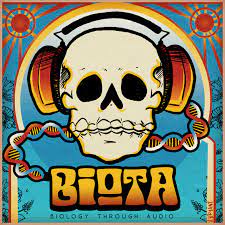BioTA Podcast Episode #34 Biofilms Podcast Overview
Author(s): Seth Higbee1, Dr Pankaj Mehrotra2, J. Phil Gibson1
1. University of Oklahoma 2. University of the People, California, United States of America
347 total view(s), 92 download(s)
Summary:
BioTA Episode #34: Biofilms
Authors: Seth Higbee1, Pankaj Mehrotra2, J. Phil Gibson1
Prokaryotes are often taught to us as being free living single-celled organisms that lack membrane bound organelles, however, this limited view of prokaryotic…
Description
This podcast episode explores different features of biofilms.
It was developed as part of a QUBES Faculty Mentoring Network.
Cite this work
Researchers should cite this work as follows:
- Higbee, S., Mehrotra, D., Gibson, J. P. (2024). BioTA Podcast Episode #34 Biofilms Podcast Overview. BIOTA Podcast Faculty Mentoring Network, QUBES Educational Resources. doi:10.25334/HCWG-BK22
